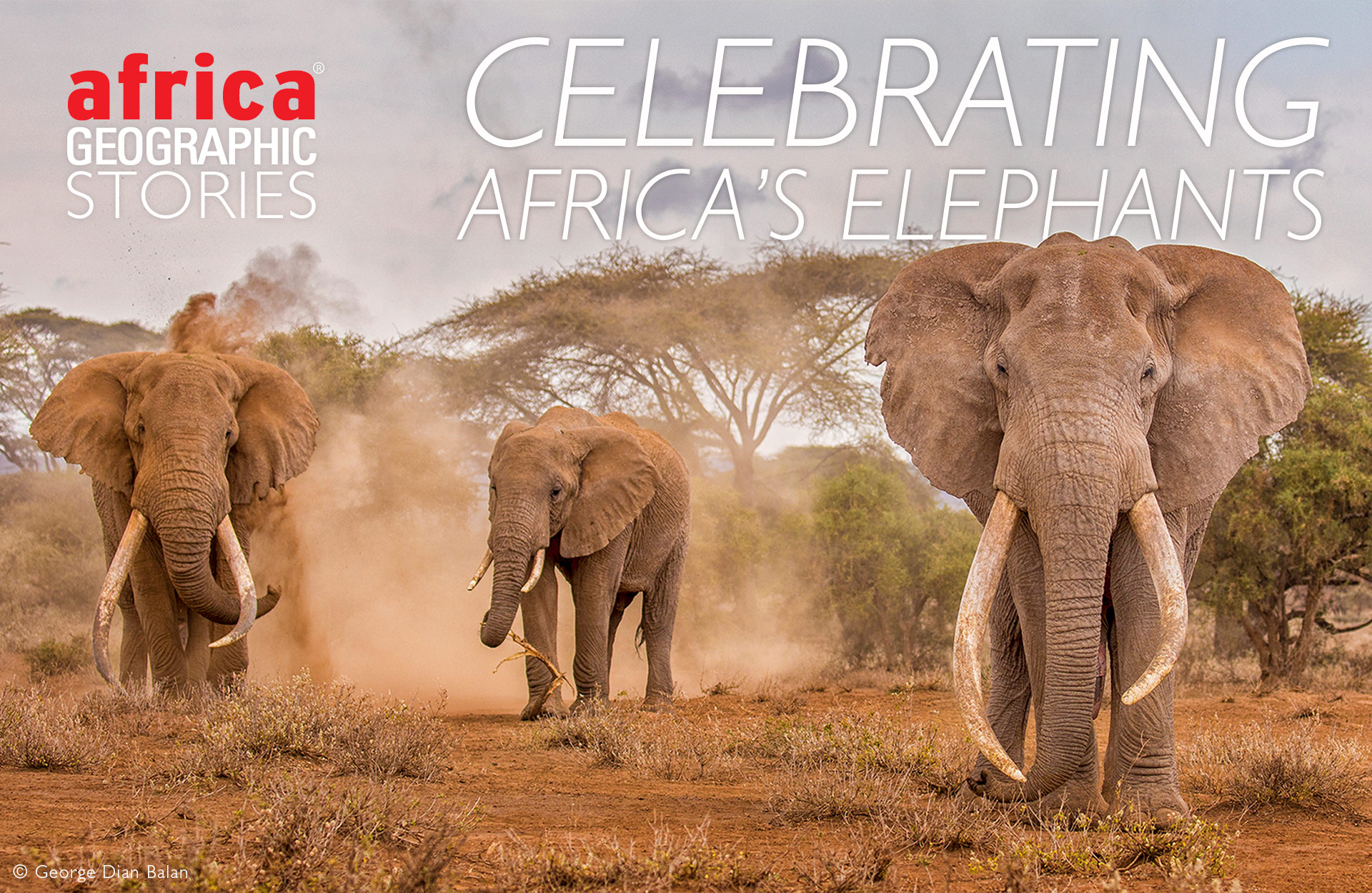
Celebrating Africa’s Elephants

The African elephant (Loxodonta africana) is the largest land mammal in the world and one of nature’s great ecosystem engineers. For many people, elephants epitomise an African safari. Their big stature, tactical trunks, and human-like qualities make them a point of interest for both avid and novice safari-goers alike. Their beneficial impact on biodiversity in large unfenced ecosystems and their potentially negative impact on same in fenced environments, make them a unique and crucial keystone species in Africa.
In this gallery, Celebrating Africa’s Elephants, we are taking a look at these incredible animals through the lens of some incredibly talented photographers who entered our Photographer of the Year 2017 and 2018 competitions. So sit back, relax, and enjoy this awe-inspiring gallery honouring these majestic pachyderms.

“Circles of protection” at Addo Elephant National Park, South Africa © John Vosloo (Photographer of the Year 2017 Winner)
“While this elephant herd was at the waterhole, I noticed that there was only one little calf amongst them. It seemed to be the subject of overprotectiveness with almost every elephant it came into contact with. This image shows more than one adult elephant very carefully and delicately using their trunk to protect and guide this little one.” ~ John Vosloo

“Strong family” – an elephant herd make their way through Serengeti National Park, Tanzania © Panos Laskarakis (Photographer of the Year 2018 entrant)
“Along the endless plains of Serengeti National Park, a large family of the biggest land mammals on Earth approached. As I captured their magnificence, I wondered to myself what it felt like to be such an incredible creature, to have that power and those strong bonds that they keep within the herd.” ~ Panos Laskarakis

Two iconic tuskers flank a younger ‘askari’ in East Africa © George Dian Balan (Photographer of the Year 2018 entrant)
“If there is any ‘Walk of Fame’ in the elephant world, then this must be the one. Two living monuments of natural history in an exquisite display. The young bull in between the patriarchs has just left his maternal family and is looking for role models. The two iconic bulls probably have the same father. For the most part, they are “brothers in tusks”. The one in the background is three years older and has possibly the biggest tusks on any elephant alive.” ~ George Dian Balan

A blue dusk elephant fight in Zimanga Private Game Reserve, South Africa © Andreas Hemb (Photographer of the Year 2018 Top 101)
Elephants are the heaviest land mammals, at 4-7 tons, and the second-tallest land mammal (behind the giraffe) at 3.1 to 3.4 metres at the shoulder. The largest elephant on record weighed 10.9 tons and was 3.9 metres at the shoulder.
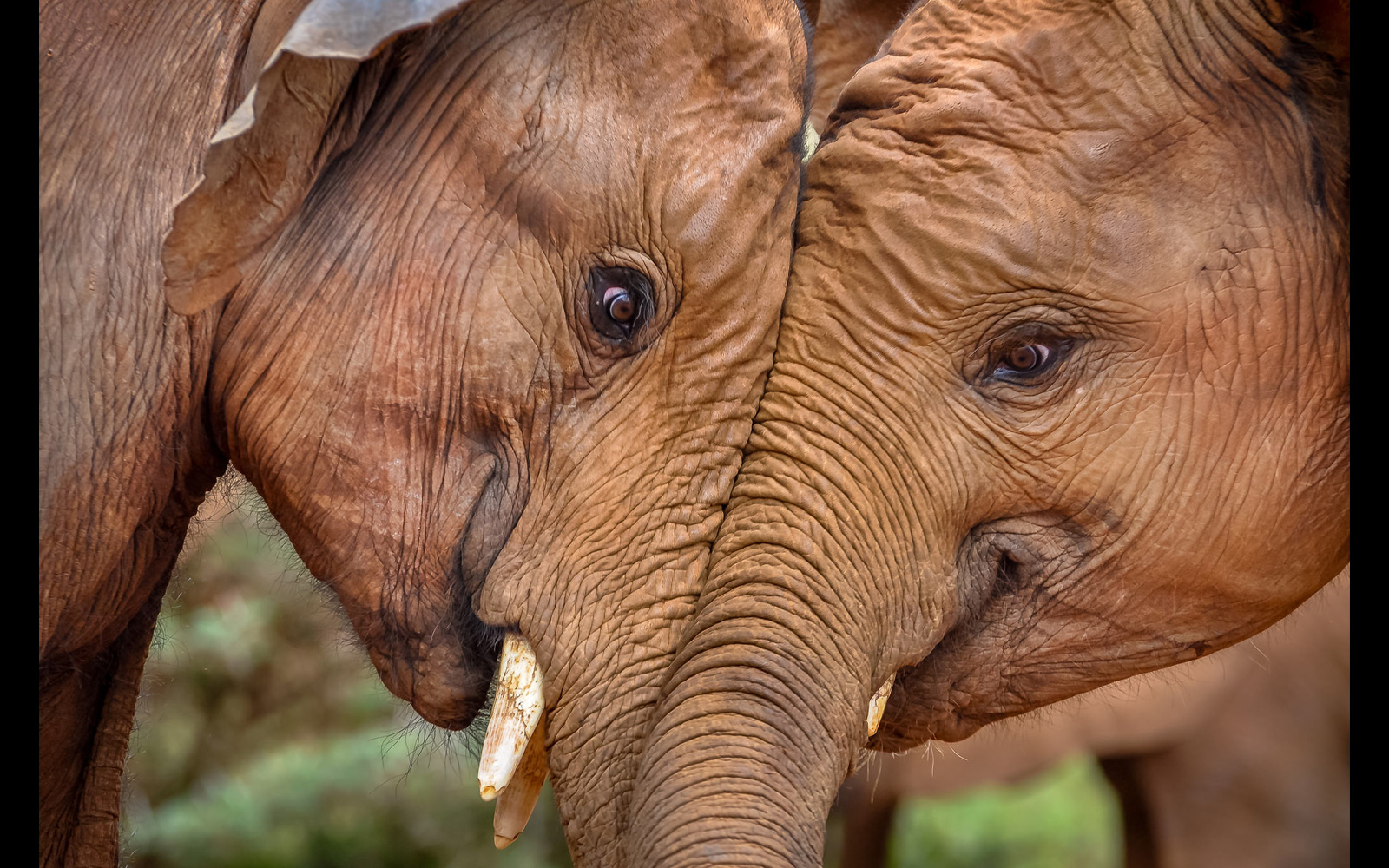
“Eyes only for you” – two rescued adolescent elephants at David Sheldrick Wildlife Trust’s Elephant Orphanage, Nairobi, Kenya © Poulomee Basu (Photographer of the Year 2018 entrant)
Elephants communicate in a low-frequency soundwave, the majority of which is below our hearing spectrum. The hungry tummy rumble is the portion of the sound that we can hear. However, it has been suggested that there are over 23 different vocalisms – of which 80% are used exclusively by the cows.
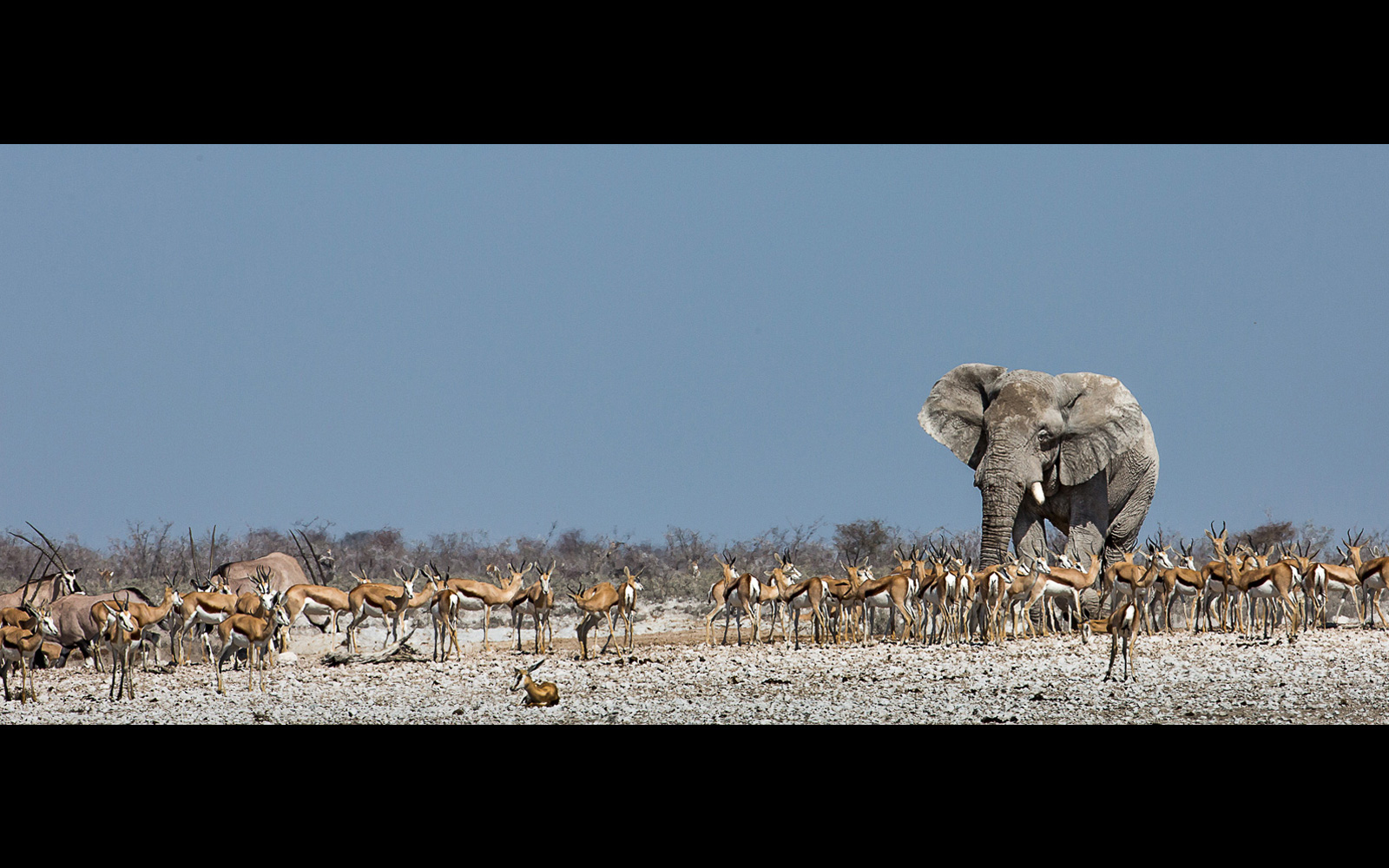
“Majestic elephant bull” in Etosha National Park, Namibia © Annemarie du Plessis (Photographer of the Year 2017 Finalist)
“A lonely elephant bull appeared on the horizon in Etosha, approaching the Newbrownii waterhole. The closer the bull got to the waterhole, the more majestic he towered above the herd of springbok and other game at the waterhole… I knew I had to get to the waterhole’s viewpoint! But there was no time! I suddenly realised that I was in the perfect place to take the shot. The contrast between the white-dusty elephant and clear blue Etosha skies contributed to an awesome shot.” ~Annemarie du Plessis. Editors: Bear in mind that for epic shots like this, October is one of the best months for wildlife viewing.
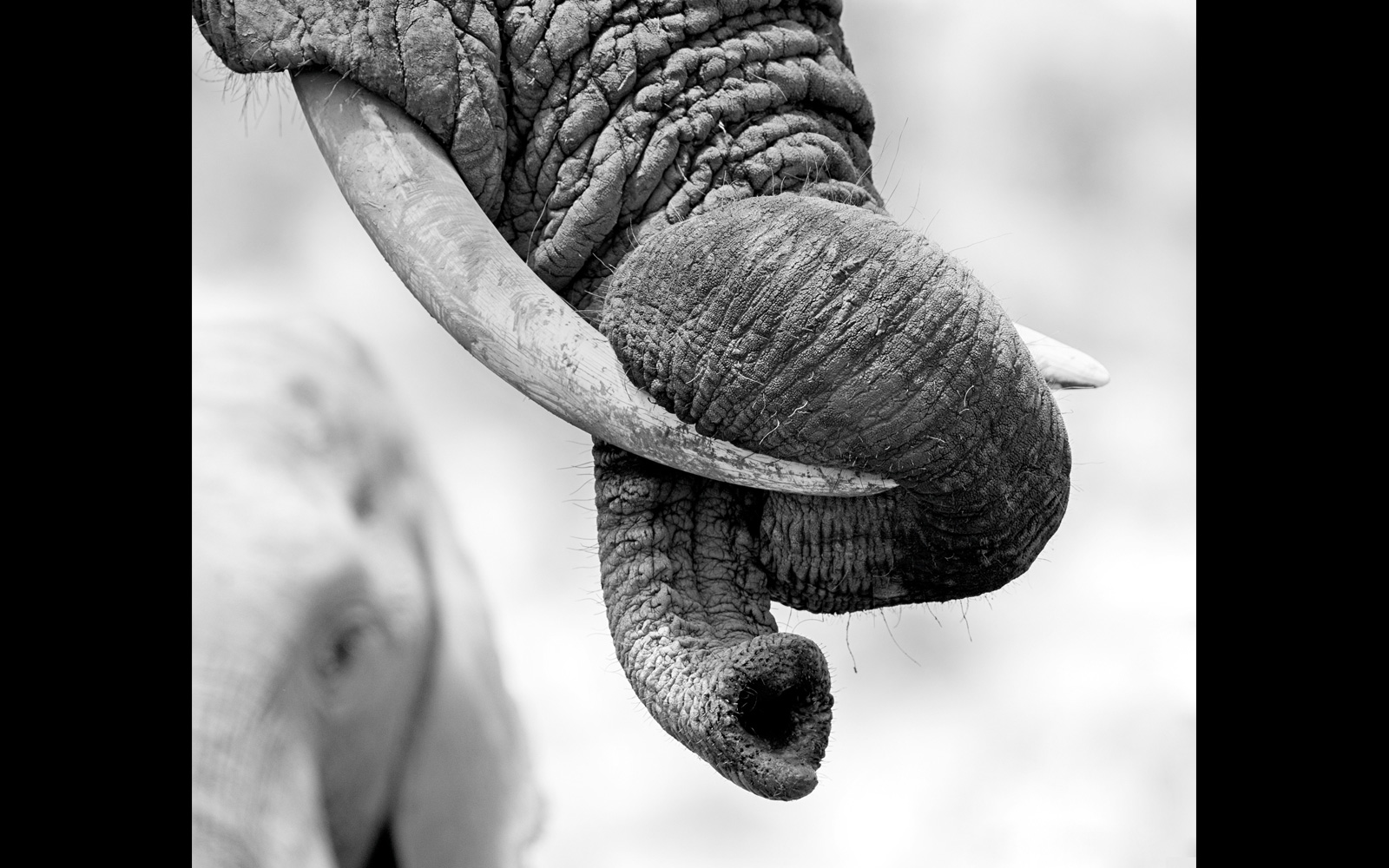
An elephant rests its trunk on its tusk in Addo National Park, South Africa. © Prelena Soma Owen (Photographer of the Year 2018 entrant)
Elephants are either left or right-handed. They are born not knowing how to use their trunks and learn as they grow. Like humans, they show a preference for grasping objects to the left or right. You can tell which side elephants prefer – tusks are shorter on the preferred side (because they get worn down more on that side).

“The long march” in Amboseli National Park, Kenya © Paolo Torchio (Photographer of the Year 2018 entrant)
“For the majority of the year, Lake Amboseli is an immense, flat, arid land. Nothing can grow on it, and under the African sun, the temperature during the day can be unbearable. So many times, while driving along the desert, I dreamt of seeing the elephants that are forced to cross the desert to reach the Amboseli swamp and the freshwater from Mount Kilimanjaro. And one day it happened. Far away, like a mirage, I saw a long line of pachyderms slowly marching through the heat waves. I carefully approached them, and I finally took the shot I was looking for, in the incredible silence of the dusty desert.” ~ Paolo Torchio

An elephant’s trunk in Mana Pools National Park, Zimbabwe © Giovanni Frescura (Photographer of the Year 2018 Finalist)
There are about 50,000 muscles in an elephant’s trunk, made up of six muscle groups, and no bones. This compares to 639 muscles in the entire human body! The closest thing we have to an elephant’s trunk is our tongue. Elephants use their trunks to breathe, drink, eat, smell, snorkel, wrestle, communicate, touch, feel, hold, grab and pull. We can’t think of any other appendage that is so versatile.
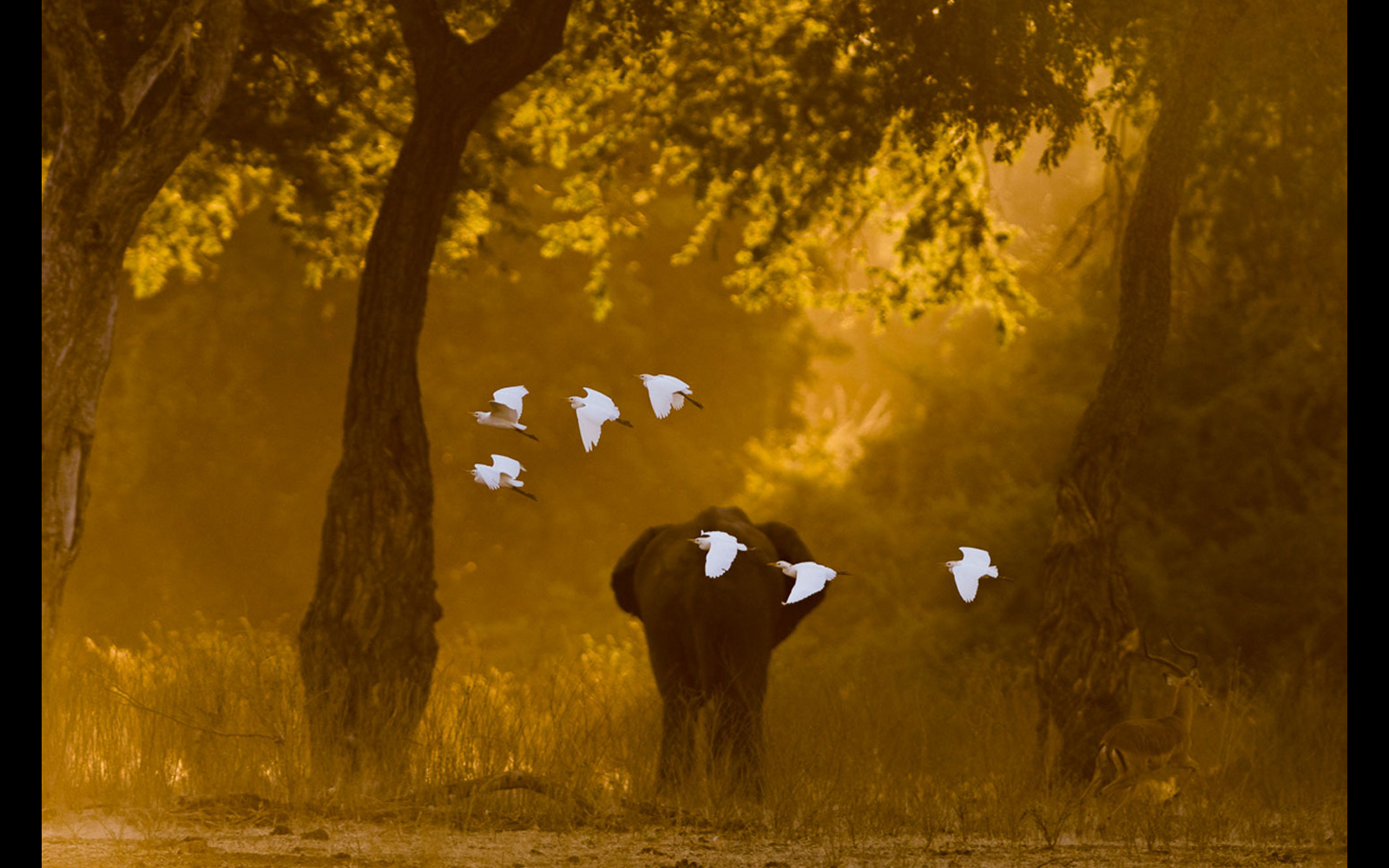
Flight of gold in Mana Pools National Park, Zimbabwe © Vikram Ghanekar (Photographer of the Year 2017 Top 101 Finalist)
“The plan was to capture this majestic elephant bull in Mana’s golden light before the sun disappeared beyond the Zambian escarpment. There was a flock of cattle egrets feeding on the insects disturbed by the elephant. All of a sudden, they took off and flew right across the elephant. With some quick camera work, I was able to freeze their motion against this unique and beautiful background in magical light. An impala startled by the birds added to the scene.” ~ Vikram Ghanekar
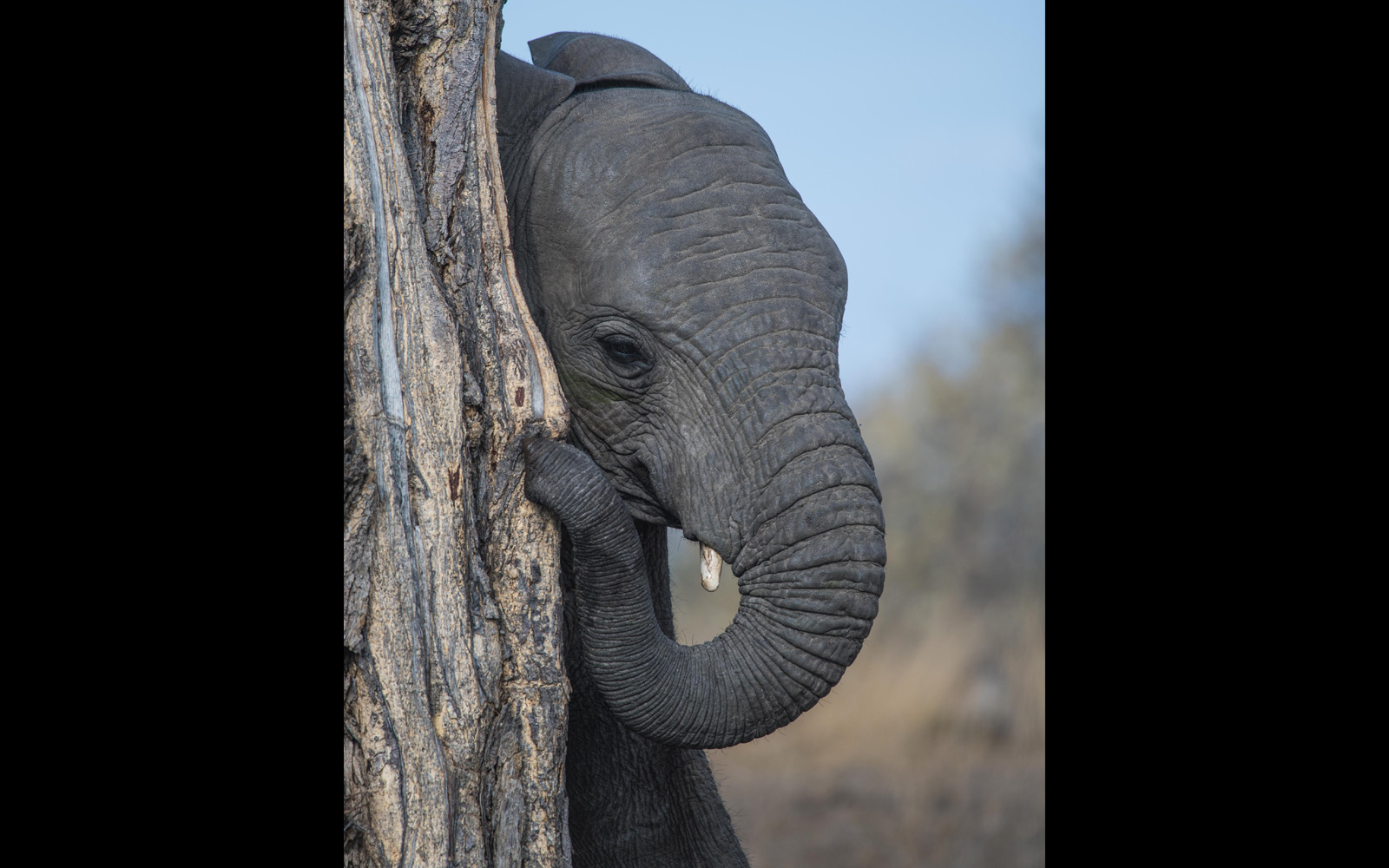
“Shy portrait” in Mala Mala Game Reserve, South Africa © Mike Pepe (Photographer of the Year 2018 entrant)
Many tree species rely on elephants to spread their seeds. But that is not all. Many seeds are more likely to germinate after passing through an elephant’s gut. Elephants transport these seeds for many kilometres as they process their food, before depositing them in their dung balls – a vital fertiliser and moisture package for those seeds, and a kick-starter to life.
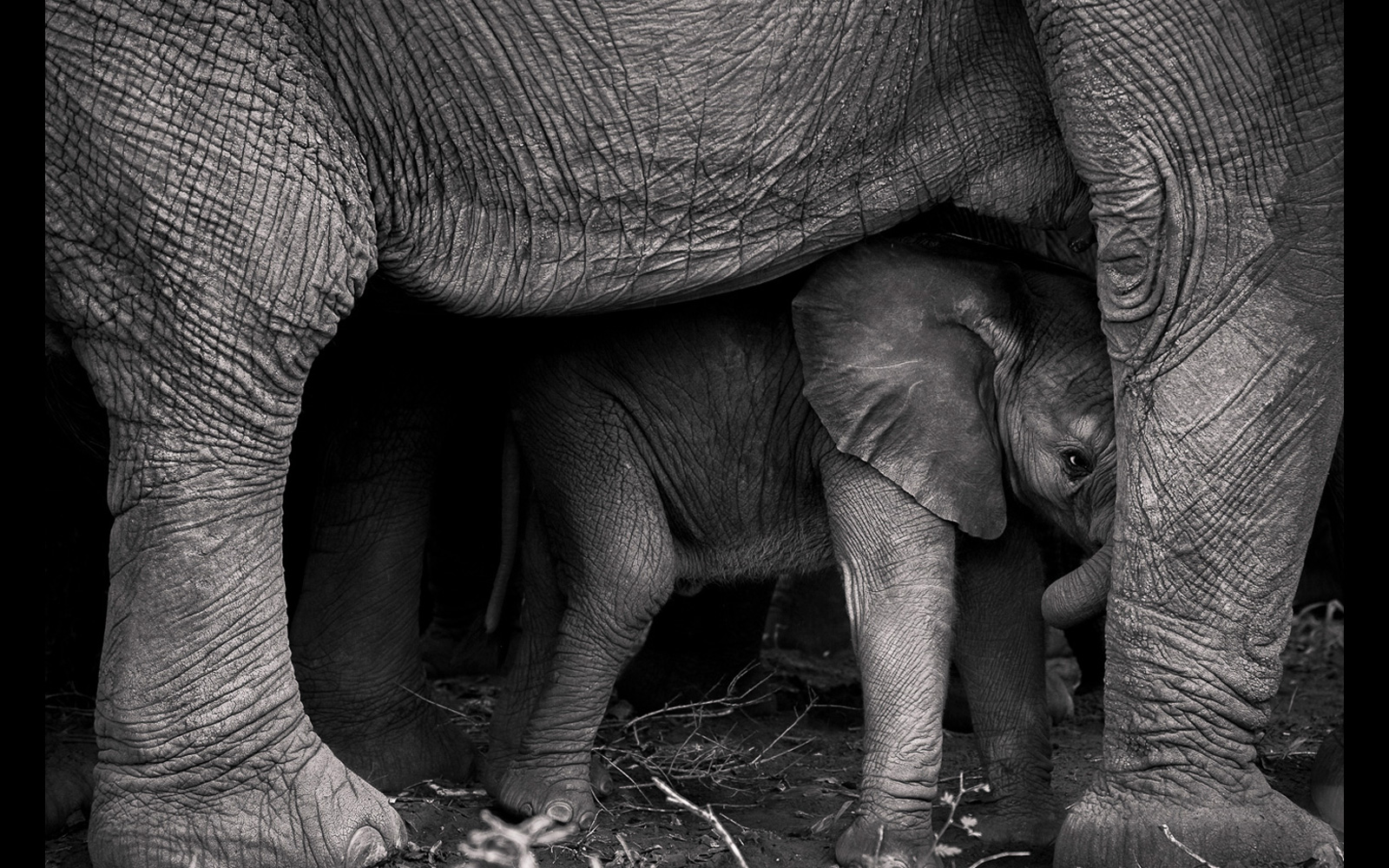
“Unsteady but secure” in Skukuza, Kruger National Park, South Africa © Thinus Schoeman (Photographer of the Year 2017 Top 101 Finalist)
“A family of elephants were resting in the shade of large riverine trees on the riverbank, approximately 8 to 10 metres from the road. I spotted this very young baby elephant, still unsure on its feet, secure between the elephant cow’s legs. I liked the natural framing of the body and legs of the elephant cow provided and had an image in mind. I had time to take four photos before the baby turned away and disappeared deeper into the herd. It was a privilege to witness how protective the family was of this baby elephant.” ~ Thinus Schoeman
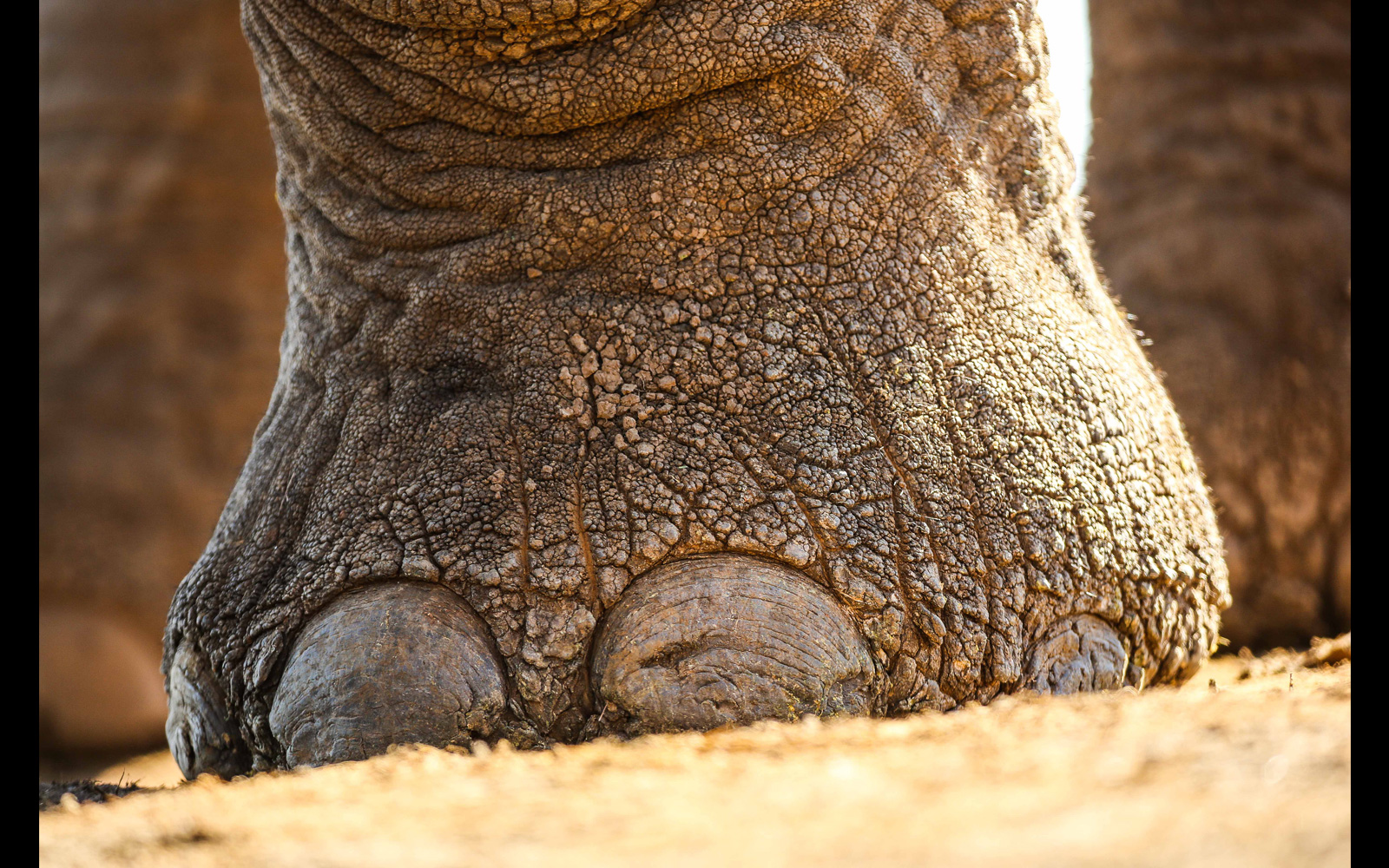
Up close of an elephant’s foot in Madikwe Game Reserve, South Africa © Subi Sridharan (Photographer of the Year 2018 entrant)
“This photo was taken from a hide next to a waterhole near the lodge where I stayed in Madikwe. I was in the hide when a herd of elephants approached. I wanted to show the size of these gentle giants, so I started taking close-up photos of one of the elephant’s legs. Only after viewing it through the viewfinder, I could see the details (including the broken nail!) which I would not have seen otherwise.” ~ Subi Sridharan
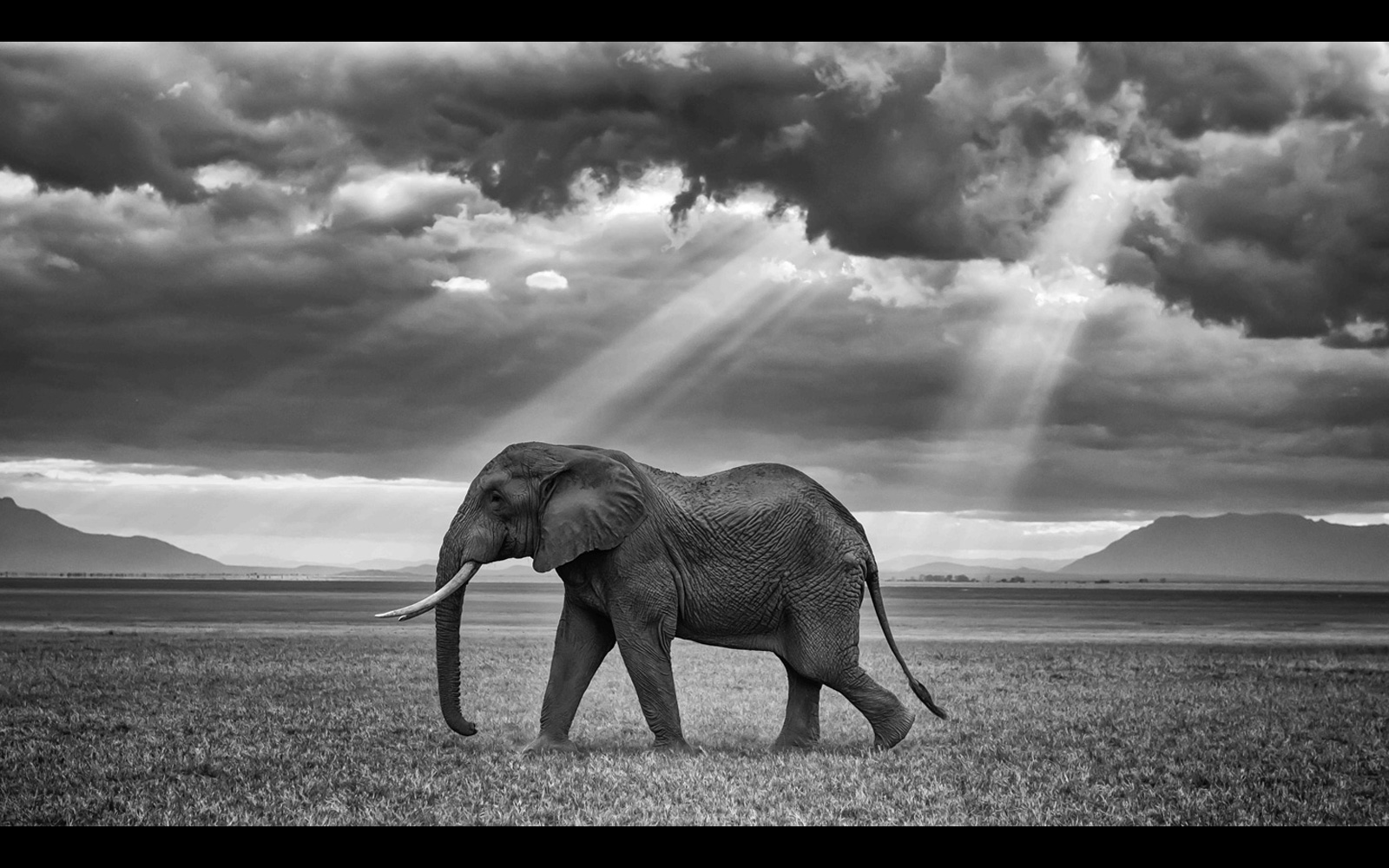
A natural spotlight in Amboseli National Park, Kenya © Dana Kennedy (Photographer of the Year 2017 Top 101 Finalist)
“Out on Lake Amboseli, one gets a sense of colossal space and unobstructed views. On this evening game drive, the angry skies produced a dramatic backdrop to this image of a lone bull elephant as he walked by our vehicle in total silence. Amboseli and its elephants provide an extraordinary window into the world of these majestic creatures like no other place on Earth.” ~ Dana Kennedy
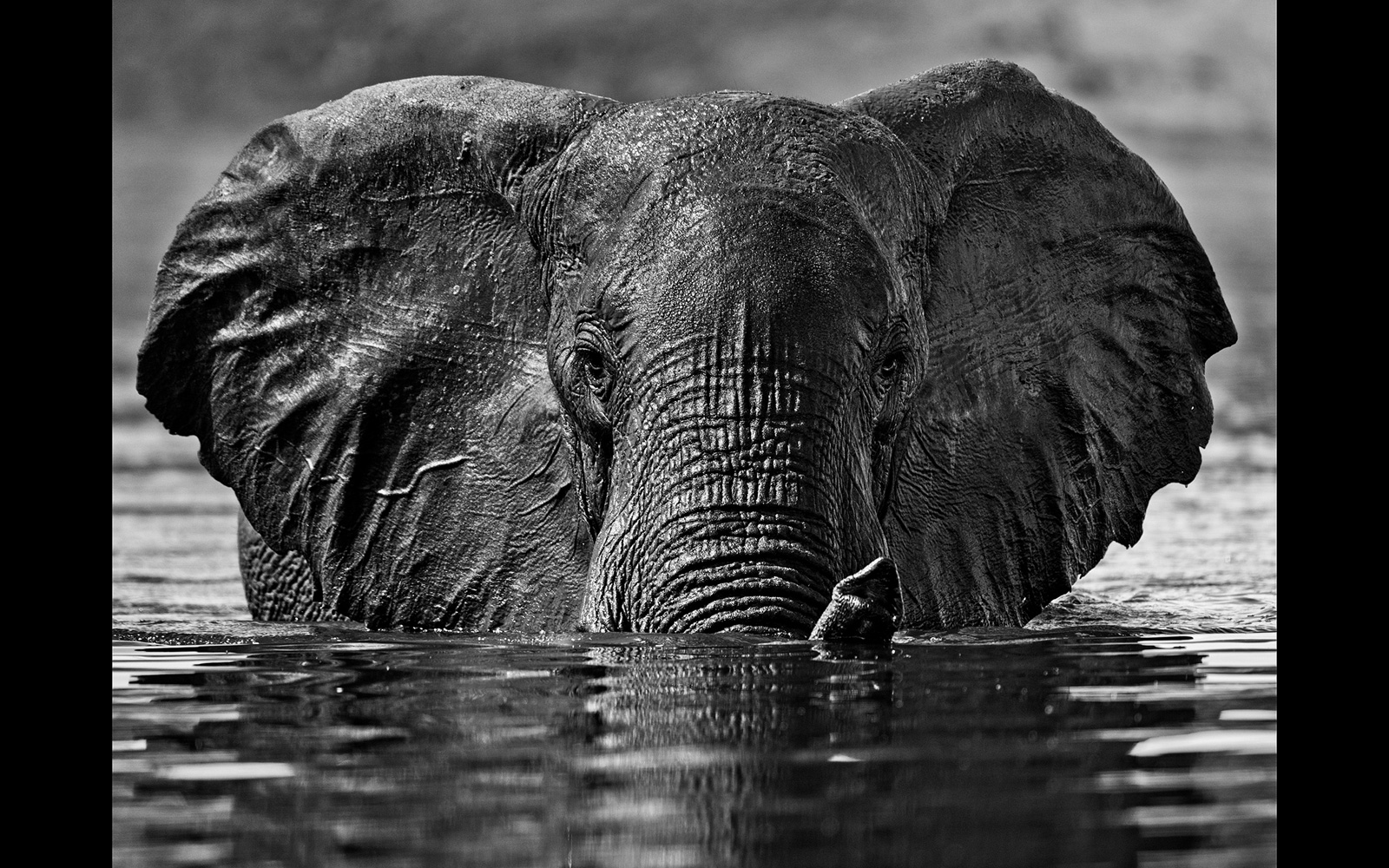
An elephant crosses the Chobe River in Chobe National Park, Botswana, © Johan J. Botha (Photographer of the Year 2018 entrant)
The elephant’s sense of smell is estimated to be four times that of a bloodhound or 160 times that of a human. They can smell water from many kilometres away.

“Giant walking” in Kruger National Park, South Africa © Bernhard Bekker (Photographer of the Year 2018 entrant)
“While travelling from the airport to our photographic safari destination, we took a small detour on a well-known loop when suddenly this massive elephant bull appeared out of nowhere. He was so gracious and not bothered by our presence at all. While he was walking, the perfect side profile shot presented itself for this amazing capture. It was truly amazing to see this tusker in this area just going about his daily routine.” ~ Bernhard Bekker
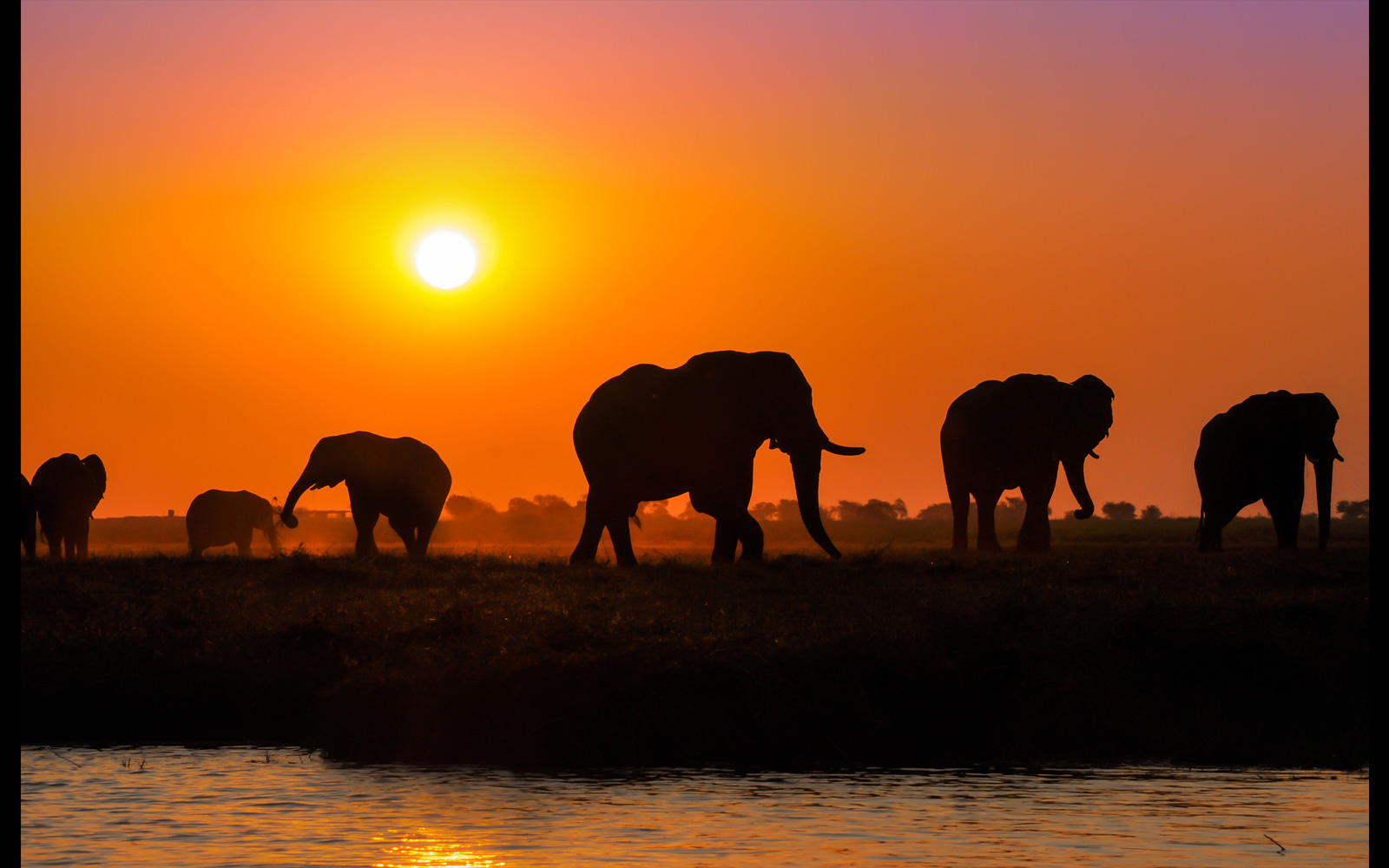
A lazy sunset along the riverbank with an elephant herd for company in Chobe National Park, Botswana © Poulomee Basu (Photographer of the Year 2018 entrant)
Elephant herds are led by older cows (matriarchs), with young bulls forming their own smaller herds after leaving the breeding herd. Old bulls often roam on their own, or with a few companions (often referred to as askaris), meeting up with breeding herds as cows come into season.
To comment on this story: Login (or sign up) to our app here - it's a troll-free safe place 🙂.![]()




